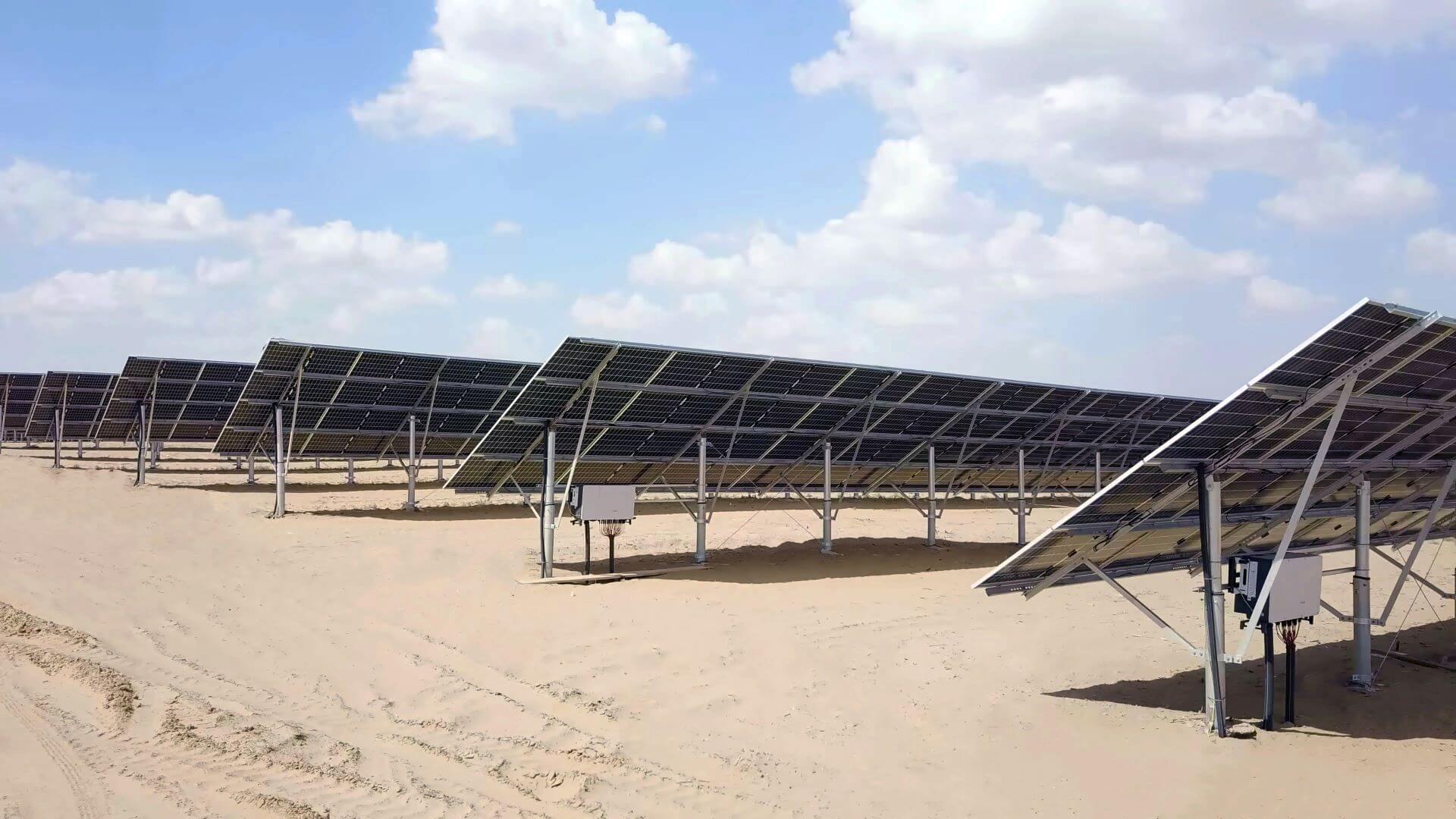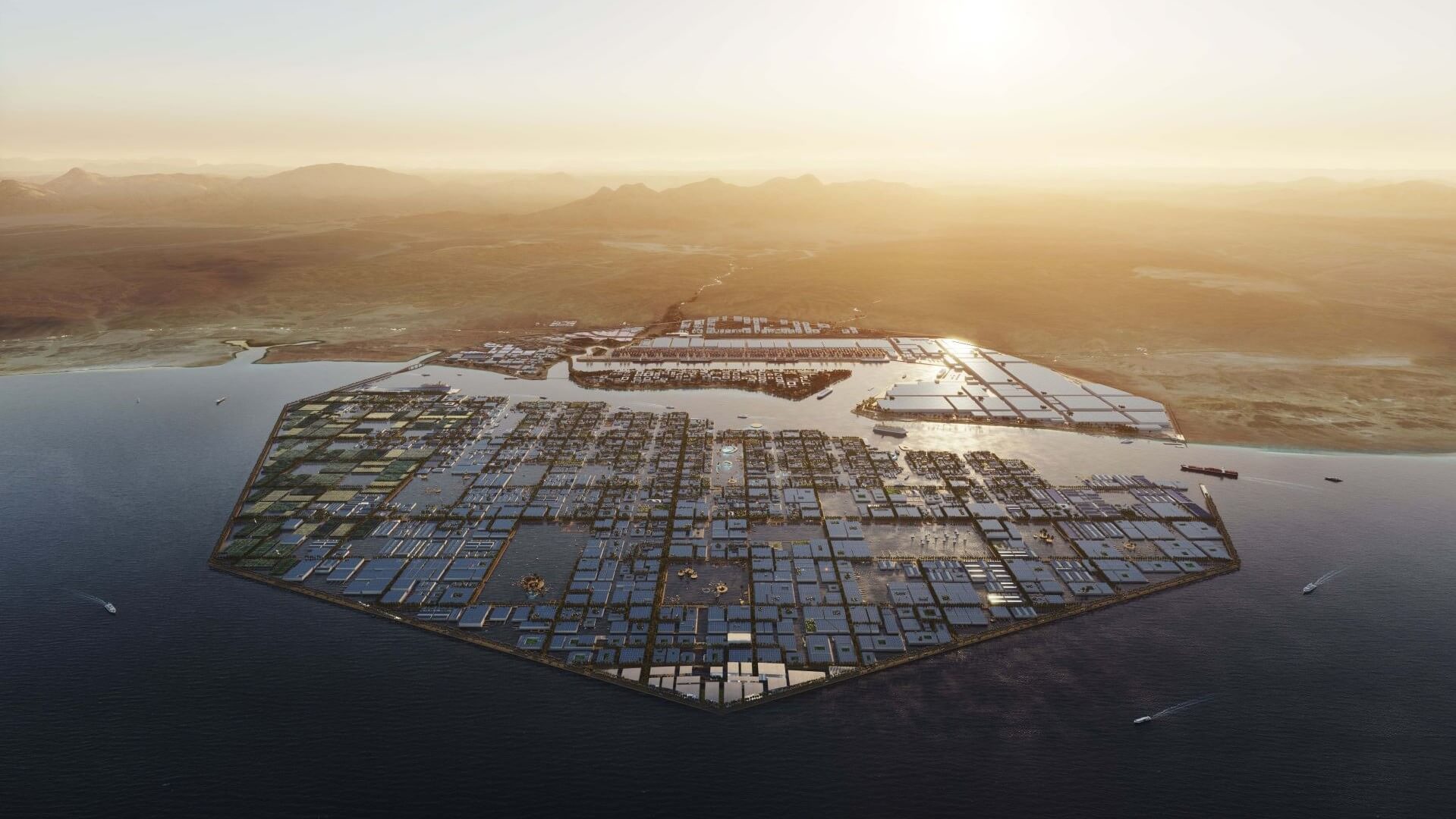UPDATED 1 Sept: The EI library in London is temporarily closed to the public, as a precautionary measure in light of the ongoing COVID-19 situation. The Knowledge Service will still be answering email queries via email , or via live chats during working hours (09:15-17:00 GMT). Our e-library is always open for members here: eLibrary , for full-text access to over 200 e-books and millions of articles. Thank you for your patience.
New Energy World™
New Energy World™ embraces the whole energy industry as it connects and converges to address the decarbonisation challenge. It covers progress being made across the industry, from the dynamics under way to reduce emissions in oil and gas, through improvements to the efficiency of energy conversion and use, to cutting-edge initiatives in renewable and low-carbon technologies.
Middle East plays catch-up on road to net zero
2/8/2023
8 min read
Feature
The Middle East and North Africa (MENA) region lags significantly in terms of renewable energy developments. But a raft of clean power initiatives are underway as COP28 beckons, hosted by the United Arab Emirates (UAE). New Energy World Features Editor Brian Davis reports.
Historically, the Middle East has the lowest share of clean power in its electricity mix of all regions worldwide. The MENA region’s utilisation of clean power was less than 5% compared to a global average of 38.2% in 2022, according to analysis by Ember-climate.org – suggesting a ‘disturbing’ indifference to climate change.
In 2022, thermal power (from coal, oil and gas) dominated the region and accounted for more than 90% of all energy consumption, with natural gas as the main fuel source.
According to GlobalData analysis, the Middle East’s energy transition continues to be ‘slow and piecemeal’ despite promises of large additions of renewable capacity in coming years. Although signs of energy transition are underway, fossil fuels are expected to continue to dominate. The analysts forecast that by 2035, thermal power will still account for 70% of total capacity, with fossil fuels accounting for 84% of the power generation mix.
These figures are not surprising given the vast oil and gas reserves in the Middle East, and the reliance on them by much of the Middle East’s economy at local, national and international level.
Currently the MENA region accounts for just a 1% share of global renewable energy capacity – about 29 GW, although 3.2 GW was commissioned in 2022 (a 12.8% increase since 2021), according to the latest renewable capacity statistics from the International Renewable Energy Agency (IRENA).
Big movers
Fortunately, there are signs of change, headlined by the UAE, which has a target of 44% renewable energy generation by 2050 (still less than half of Europe’s sustainability ambitions). Some other neighbouring countries have also set out their ambitions. Saudi Arabia is aiming for 50% of total power generation from renewables by 2030, while Oman is aiming for 30% renewable generation by the end of the decade, and Qatar is targeting 20%.
Given the natural environment, Middle East renewable energy is primarily focused on solar and wind power. Solar power is forecast by GlobalData to account for 15% of the Middle East region’s power mix by 2030.
Several recent trade agreements, including the UAE-Germany Hydrogen Partnership and the Saudi Arabia Hydrogen Agreement should see the Middle East becoming a major exporter of green hydrogen (by electrolysis of desalinated water using renewable energy resources) in coming decades.
According to IRENA, Middle East renewable generating capacity rose 12% from 2021 as Iran, Israel, the UAE and Jordan all lifted green power capacity to new highs. In addition, Qatar, Oman and Lebanon all converted more renewable capacity in 2022 than had been installed over the previous decade.
On the emissions front, individual countries are feeling increasing pressure from the international community to reduce power sector greenhouse gas (GHG) emissions. Carbon emissions from Middle East power producers grew by 67mn tonnes (11.4%) between 2015 and 2021, making the region the largest net gain in terms of CO2 emissions outside Asia during that period.
Meanwhile, Europe, North America and Oceania all reduced their power emissions.
Energy transition momentum is building as the MENA region has significant renewables projects underway.
UAE takes the lead
In 2021, the UAE was the first MENA country to commit to net zero emissions by 2050. The total installed renewables capacity of the UAE has increased 10-fold since 2017, reaching 31 GW in 2022, according to IRENA figures.
The UAE began financing clean energy projects more than 15 years ago. It has invested over $40bn to date and predicts that clean energy production capacity, including solar and nuclear, will reach 14 GW by 2030, up from 100 MW in 2015 and 2.4 GW in 2020.
The UAE also supports green infrastructure and clean energy projects worldwide and has invested about $16.8bn in renewable energy ventures in 70 countries, with a focus on developing nations.
In November 2021, at COP26 the UAE announced its Hydrogen Leadership Roadmap, aimed at becoming a global leader in low-carbon hydrogen, with seven projects underway targeting a 25% share in key export markets. Projects which are under construction or complete include the Abu Dhabi Hydrogen Alliance (a joint venture between ADNOC, Mubadala and ADQ) and DEWA – the first solar photovoltaic (PV) and green hydrogen production facility; a green hydrogen demonstration plant at Al Reyadah aimed at establishing a UAE hydrogen hub with BP; a green ammonia project; and a large-scale green hydrogen project to power green steel production.
The UAE is also rolling out carbon capture utilisation and storage (CCUS) facilities, such as the Al Reyadah project, which processes CO2 from Emirates Steel Industries for use in onshore oil fields.
Masdar, which is jointly owned by ADNOC, Mubadala Investment Company and Abu Dhabi National Energy Company (TAQA), has a global investment portfolio exceeding $30bn, operating in over 40 countries with a total renewable electricity generation capacity of over 20 GW. The company is aiming for 100 GW green energy capacity by 2030 and annual green hydrogen production capacity of 1mn t/y by that year. It has investments in wind, solar, green hydrogen, geothermal and waste-to-energy projects.
In 2022, Masdar, in partnership with Bee’ah, signed the Sharjah waste-to-energy project, to convert 300,000 t/y of municipal waste from landfill to power. Work also continues on the Al Dhafra solar PV independent power producer project (IPP), claimed to be the world’s largest single site solar power plant.

The UAE supports green infrastructure projects in 70 countries, with a focus on developing nations
Photo: Adobe Stock
Saudi Arabia ambitions
Saudi Arabia has been slower to act, with just 443 MW of installed renewable energy capacity, mainly from the 300 MW Sakaka solar plant, under the National Energy Renewable Programme. However, it aims to generate half of its power from renewables by 2030 – bringing solar and wind production up to 58.7 GW, with investment of SR380bn ($101bn).
More than a dozen renewable projects are underway. However, The Economist suggests that ‘despite some progress, the government is unlikely to meet the over-optimistic goals for 2030’. Indeed, Saudi Arabia also continues to expand its oil and gas capacity, aimed at lifting nameplate oil capacity to 15mn b/d by 2030.
Saudi Arabia’s headline sustainable regional development is NEOM in the north-east of the kingdom, which features plans for the world’s largest hydrogen facility – in line with Crown Prince Mohammed bin Salman’s vision to diversify the economy on the way to net zero emissions by 2060.
The NEOM Green Hydrogen Company (NGHC) facility is being built in Oxagon, as a joint venture between NEOM, ACWA Power and Air Products, and is due to become operational in 2026. The project aims to produce up to 600 t/d of green hydrogen as green ammonia for export. Using Thyssenkrupp technology for green hydrogen, as well as Air Products’ air separation technology to produce nitrogen for ammonia production, the plant will run on 4 GW of wind and solar power, saving up to 5mn t/y of CO2 emissions. The $5bn project is supported by 23 financial institutions, including the Saudi Industrial Development Fund, the National Infrastructure Fund and local and international banks.
 A CGI rendering of Oxagon, Saudi Arabia’s eight-sided floating city in the Red Sea, where NGHC’s new green hydrogen plant will be located
A CGI rendering of Oxagon, Saudi Arabia’s eight-sided floating city in the Red Sea, where NGHC’s new green hydrogen plant will be located
Photo: NEOM
Construction is also underway of the 2.06 GW solar facility in Mecca province, aimed to power 350,000 homes by the end of 2025. The facility is a joint venture of ACWA Power and the Water and Electricity Holding Company (Badeel), a subsidiary of the Saudi Public Investment Fund (PIF). ACWA Power is also developing the 1.5 GW Sudair solar PV facility in the Riyadh province, with estimated investment of $906mn, and has green infrastructure projects in 70 countries.
Saudi Arabia’s first wind farm at Dumat al-Jandal was connected to the grid last year, with a capacity of 400 MW.
Egypt and Bahrain
ACWA Power and the New and Renewable Energy Authority have signed a memorandum of understanding to allocate land outside Sohag, Egypt, for a 10 GW wind farm. The wind project is expected to generate about 50,000 GWh of clean energy annually to supply around 11 million homes, mitigating the impact of 25.5mn t/y of carbon emissions.
ACWA Power’s 1.1 GW Gulf of Suez onshore wind farm project is being developed in the Gharib Cape, Red Sea area of Egypt, and is due to provide electricity to 1 million households by the end of 2026, reducing CO2 emissions by 2.4mn t/y.
Bahrain aims to boost its share of renewable electricity generation to a modest 5% by 2025. The country has completed Phase 2 of the Beyon solar park, launched in November 2021. Phases 1 and 2 will generate 3.6 GWh of clean energy, saving over 2,000 t/y of CO2 emissions.
Electric vehicle roll-out
Despite the lack of infrastructure to support a growing electric vehicle (EV) market and other challenges, the UAE, Saudi Arabia and Jordan are spearheading EV adoption in the region.
According to the International Energy Agency (IEA), EV sales in the Middle East are less than 1% of global sales (which were 14mn in 2022). The UAE has a target of putting 42,000 EVs on the road by 2030 and its government has already converted 20% of agency cars to EVs. Analysts at Arthur D Little forecast that the UAE’s EV market will grow at 30% CAGR (compound annual growth rate) until 2028.
Meanwhile, Dubai Silicon Oasis has partnered with Schneider Electric to install charging stations and ADNOC announced a 70,000 electric charging point plan this year. Al-Futtaim Electric Mobility has teamed up with Siemens to create Charge2MOOV charging stations with plans to install 3,000 stations by 2030. Saudi Arabia has set its sights on a homegrown EV called CEER developed by Foxconn, with plans to run an EV factory in the kingdom.
According to the IEA, Jordan has one of the highest EV adoption rates in the MENA region, with 30% of total vehicle sales electrified in 2022.
Looking forward
From a slow start, the Middle East is at last putting its foot on the accelerator when it comes to deployment of renewable energy. Hopefully, COP28 will be a turning point.
